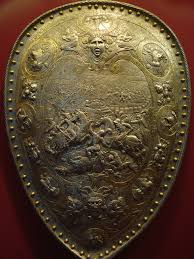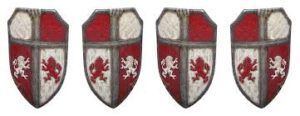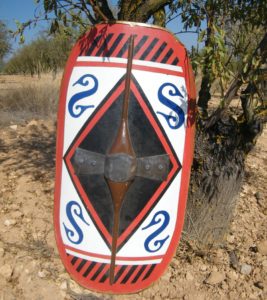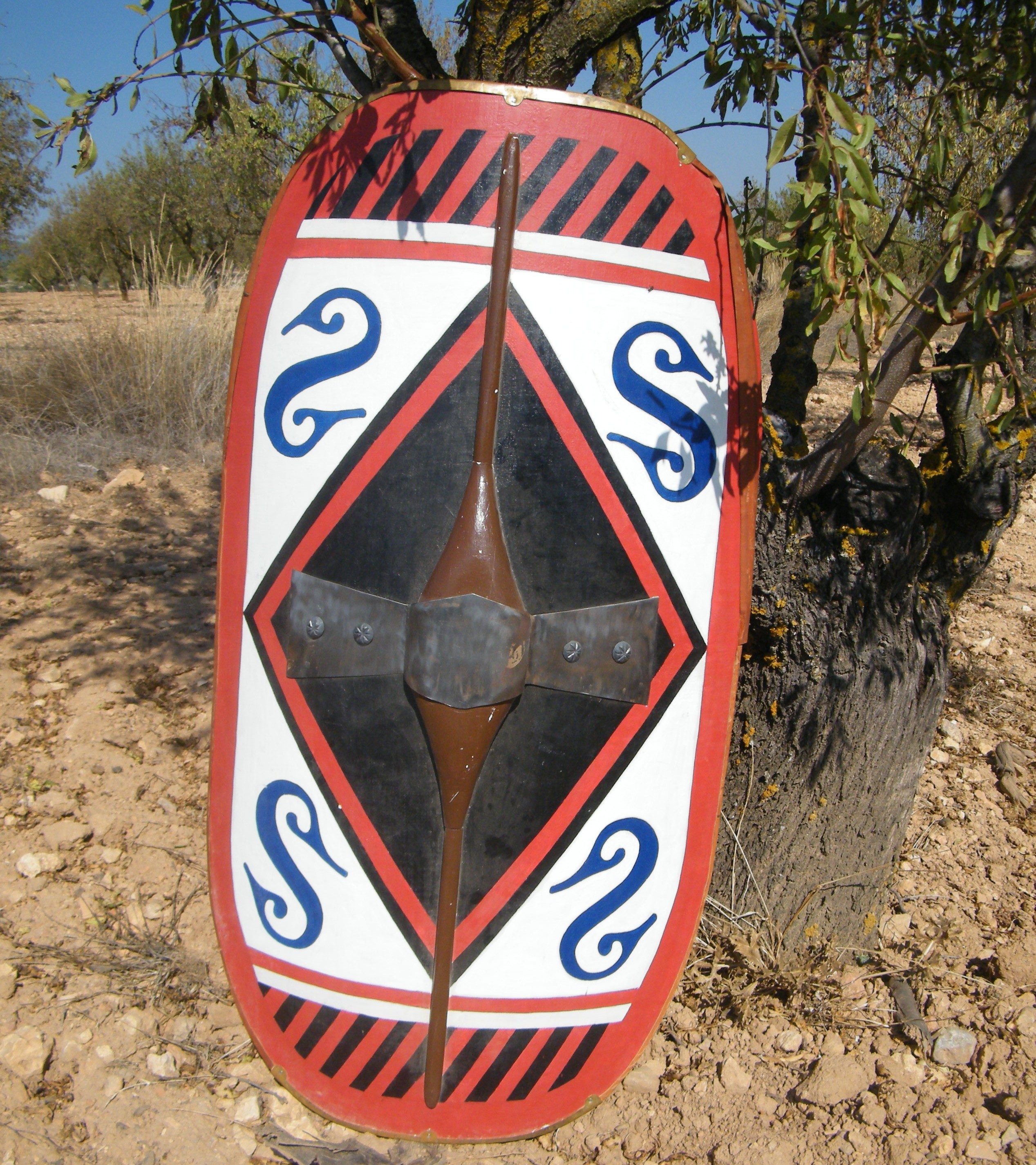Ancient Roman Shields: Scutum was the Latin word for “shield”, in spite of it being specifically associated with the rectangular, semi-cylindrical body shield, it is still carried by Roman legionaries in the modern times.
Ancient Roman Shields
In the days of the Ancient Rome, Roman soldiers often bore round shields called aside by the Greeks, in the fashion of Greek hoplites. The oval scutum was depicted on the Altar of Domitius Ahenobarbus in Rome, the Aemilius Paullus monument at Delphi, and there is also an actual example found at Kasr el-Harit in Egypt.

Gradually the scutum evolved into the rectangular or sub-rectangular type during the early Roman Empire known as the imperial scutum discussed below.
The Imperial Scutum
This rectangular scutum gradually replaced the oval scutum. Curved, rectangular scuta were constructed largely of strips of overlapping bentwood, probably set in place by steaming over a curved form in very much the same way as how a modern-day plywood chair is made although there is no direct evidence survives to prove this.

This meant that the shield was strong yet at the same time light enough to be carried over long distances. The best surviving example, from Dura-Europos in Syria, was 1.06 m (42 in) in height, a chord of 0.66 m or 26 inches, with a distance around the curve of 0.86 m or 34 inches, and a thickness of 5 mm to 6 mm.
The curved shape of the shield allowed it to absorb heavy blows, while the sides sloped away from the defender, allowing arrows and enemy blow to glance off without transmitting the full force of the impact to the legionary sheltering behind it.
The boss in the center of the shield that is the umbo, constructed either from a copper alloy of either brass or bronze or iron, was itself used offensively, being heavy and dense enough to stun or wind an opponent thereby easing the legionnaire’s subsequent strike with his gladius.
Roman Shields facts
By the end of the 3rd century, however, the rectangular scutum was believed to have disappeared. The 4th century archaeological finds particularly from the fortress of Dura-Europos indicated the subsequent use of oval or round shields which were not semi-cylindrical,

but were either dished closely resembling a bowl or flat. Roman artwork from the end of the 3rd century till the end of Antiquity depicted soldiers wielding oval or round shields.
Roman Scutum
The word “scutum” survived the old Roman Empire and entered the military vocabulary of the Byzantine Empire. Even in the 11th century, the Byzantines called their armored soldiers “Skutatoi.”
The Roman panoply consisted firstly of a shield or scutum, the convex surface of which measured two and a half feet in width and four feet in length, the thickness at the rim being a palm’s breadth. It was made of two planks glued together, the outer surface is then covered first with canvas and then with calf-skin.

Its upper and lower rims were strengthened by an iron edging which protected it from descending blows and from injury when rested on the ground. It also had an iron boss or umbo fixed to it which turned aside the most formidable blows of stones, pikes, and such other heavy missiles in general.
Legionaries would typically advance alternately with the scutum partially raised, crowding and blocking the opponent and then with the gladius. The edges of the shield were also bound in brass or rawhide, to reinforce and protect them, and may also have been used offensively.
Why are roman shields red
Scuta of the early empire was popularly depicted as being red in color, although there has been little proof that all scuta were painted red. However, one magnificently well-preserved rectangular scutum found at Dura-Europos was colored red and emblazoned with geometric patterns, winged figures, and animal motifs.

Similarly, there is also little evidence for the designs painted on scuta, although depictions from Trajan’s Column suggest that eagle-wing and thunderbolt motifs were used.




